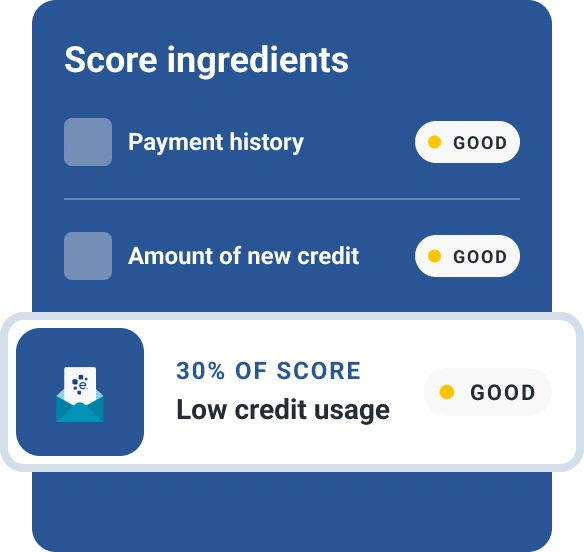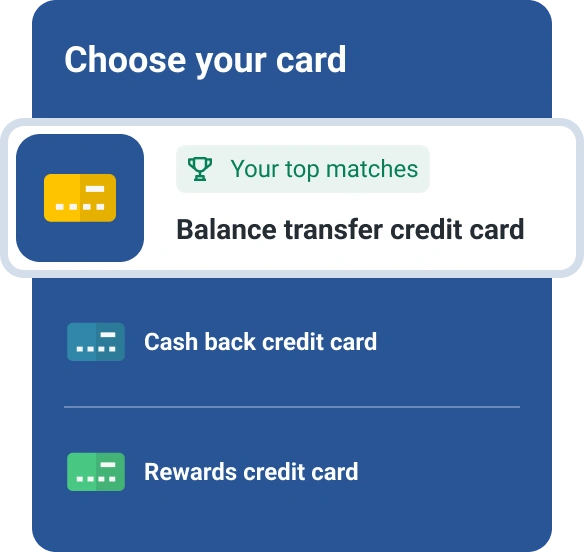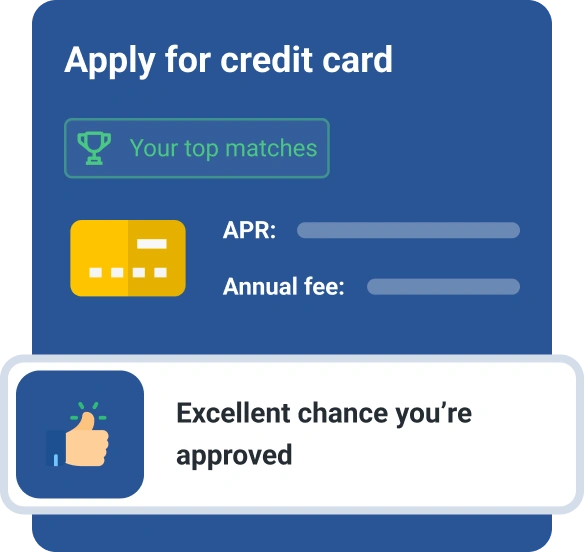How to Pay Off High-Interest Credit Cards
Quick Answer
To pay off high-interest credit cards, pause spending on the card and commit to paying more than the minimum each month. At the same time, consider ways to lower your interest rates, or add to your income so you can pay down even more debt each month.

To pay off high-interest credit cards, avoid adding to your debt, explore strategies to lower your interest rates, direct more money to payments and get expert help if you need it.
If you're struggling with credit card debt, you're not alone. Credit card debt balances among U.S. consumers grew 10% between in 2023, according to Experian data, to an average balance of $6,501. Consumers in the U.S. collectively carry more than $1 trillion in credit card debt.
Here are 13 ways to pay off high-interest credit cards.
1. Try Paying With Cash or Debit
If you're carrying credit card debt, your first step can be to pause your credit card usage and switch to using a debit card or cash instead. This will keep you from growing your balances—except for interest charges—and it may also make you more mindful of how you spend. The physical act of using cash, or the immediate impact on your bank account when using a debit card, could make you second-guess big purchases more often than using a credit card would.
When used wisely, credit cards can help you build a good credit score. That can be an argument for using a credit card for everyday purchases, but only if you pay off your entire balance each month. Otherwise, interest will pile up, and you'll be at risk of feeling discouraged by a growing balance or, worse, missing payments.
2. Consider a Credit Card Balance Transfer
To make a balance transfer, you'll move credit card debt from a high-interest card to one that offers a promotional 0% APR (annual percentage rate) period, typically 12 to 21 months. That means you can pay down debt without incurring more interest, as long as you pay off your debt by the time the promotional period ends.
You may be charged a balance transfer fee, which is often 3% to 5% of the transferred balance, and you'll generally need good or excellent credit to qualify. Note that you won't be able to move debt between cards issued by the same financial institution.
A balance transfer can lead to big savings. Say you have a $5,000 balance on a card with an 18% APR. If you wanted to pay it off in 12 months, you'd pay $458.40 per month and $500.80 in interest. If you transferred the balance to a card with 0% APR—and opted for a card with no balance transfer fee—you'd pay $416.67 per month and $0 in interest.
3. Pay More Than the Minimum Amount Due
To get rid of debt, pay more than the minimum payment your credit card issuer assigns you. Your minimum payment is typically a percentage of your total balance, such as 2% to 4%, or a fixed amount of $25 or $35 if your balance is under a certain threshold. Making only your minimum required payment will typically keep you in debt for longer than you want.
When you're focused on knocking out debt, paying extra helps reduce your principal balance, which, in turn, means you'll be charged interest on a lower amount. Anything you pay beyond the minimum is helpful. Use a calculator to see how much faster you could pay off your debt if you send an extra $25, $50 or more to your balance each month.
4. Lower Your Expenses
To find more cash to put toward credit card payoff, look for ways to save money. If your cellphone bill is one of your highest recurring expenses, ask your provider if it offers new plans—even prepaid ones—that give you equivalent service for less money. Or limit how much you spend on food by batch cooking more meals yourself.
Any money you save from these changes can go into an account you use to pay off credit card debt. If you lower your cellphone bill from $80 to $60 per month, for instance, set up a recurring transfer for $20 per month to your paydown account, and make extra credit card payments from there.
5. Increase Your Income
Aside from reducing expenses, you also can add to your income and put that money toward credit cards. Ways to increase your income include:
- Asking for a raise from your current employer or finding a higher-paying job
- Selling items you don't use
- Requesting that your current job pay for a professional certification that can help you earn more money, or completing a free certification online
- Renting out your home or car when you're not using it
- Leveraging your skills and work as a freelancer or consultant in your spare time
6. Pause or Cancel Subscriptions
A quick way to free up a fixed amount of extra cash per month is to audit your subscriptions and cancel or pause any you're not really happy with. Take extra care to cancel any subscriptions that automatically renewed after a free trial. Check whether prices went up without you realizing it, and cancel or negotiate down the cost if possible.
7. Ask for Lower Interest Rates
You might have luck asking your credit card issuer for a lower interest rate. If you have a history of making on-time payments, and you've been a customer for a number of years, you're more likely to get a positive response.
You can provide reasons for your request, including the fact that you're experiencing a financial hardship, or mention that you've received offers from competing card issuers at lower rates. If the issuer says no, ask for a temporary rate reduction instead. This can be a useful alternative if you don't qualify for a balance transfer credit card but you'd like to pay off the debt at a lower rate over a fixed period of time.
8. Pay Off the Card With the Highest Interest Rate First
If you have debt across multiple credit cards, the balance on the card with the highest rate will grow the fastest due to interest charges. Aim to pay it down first with any extra money you save or earn—an approach called the debt avalanche method. Once that balance is gone, you'll apply extra money to the card with the next-highest interest rate.
Here's how it works. Say you have a credit card with a $3,000 balance at 17% APR and another with a $2,000 balance at 12% APR. If you pay off the higher-interest card within six months instead of 12, you'd save about $133 in interest. By contrast, targeting the lower-interest card would save you just $62 in the same time frame.
9. Look Into the Snowball Method
Instead of taking the approach outlined above, you might decide that you would feel more accomplished paying off smaller balances first. These quick wins could motivate you to stay focused on your payoff plan. If this sounds preferable, use the debt snowball method. Instead of focusing on high-interest cards, you'll pay off the smallest balance first, then apply extra money to the next-smallest balance, and so on.
10. Make Two Payments Each Month
Another way to reduce the interest you pay is to make more than one credit card payment per month. If you're currently paying $50 a month now, try doubling it to $100, and try to make a payment each time you get a paycheck.
An added benefit of this strategy is that it can strengthen your credit score. You won't be at risk of missing a payment, and you'll reduce your credit utilization rate, which is the amount of available credit in use relative to your credit limit. That's the second most important factor in your credit score, after payment history.
11. Consider Credit Counseling
You don't have to develop a credit card payoff plan alone. A certified credit counselor at a nonprofit credit counseling agency can assess your debt and help you consider which of the approaches outlined here are best for you.
You may be offered the option to use a debt management plan, during which the counselor will negotiate with your creditors to reduce your interest rate, monthly payment or overall balance. You'll pay a startup fee of $33 on average and a monthly fee of $24 on average, according to 2022 data from nonprofit Money Management International. You may also be required to close your credit card accounts. Weigh the pros and cons before moving forward.
12. Automate Your Payments
Sign up for autopay with your credit card issuer if you haven't already. This can ensure you don't miss a payment, but it's also a way to regularly pay more than the minimum. If your issuer allows it, you can set up a recurring automatic payment for a fixed amount per month. That can take into account all the changes you've made to your budget and the money you've decided to redirect to credit card payoff. You may even be able to split it up into a few payments per month to stagger the impact on your checking account.
13. Understand Your Budget
In order to allocate more money to paying off high-interest credit card debt, it's crucial to know how much you're earning and how much you're spending—and in what categories. You can use this opportunity to make a precise budget, in which you choose a budgeting method that you follow closely each month.
Or you can aim to prioritize credit card payoff by sending, say, $100 a month to your debt, then spending what you have available only after paying that amount. This is called the pay yourself first approach.
Small Steps for Big Gains
If you're feeling burdened by high-interest credit card debt, start small. Make a list of your debts first to understand your current circumstances, then pick just one payoff strategy to try. You can always add on another strategy, or switch approaches, later on.
The important thing is to get started. From the first day you pay extra toward your credit cards, you'll limit the amount of interest you pay, and you can potentially improve your credit score by reducing your credit card balances. But maybe most importantly, you'll feel empowered knowing you're making an effort to live debt-free, at last.
Don’t apply blindly
Apply for credit cards confidently with personalized offers based on your credit profile. Get started with your FICO® Score for free.
See your offersAbout the author
Brianna McGurran is a freelance journalist and writing teacher based in Brooklyn, New York. Most recently, she was a staff writer and spokesperson at the personal finance website NerdWallet, where she wrote "Ask Brianna," a financial advice column syndicated by the Associated Press.
Read more from Brianna

